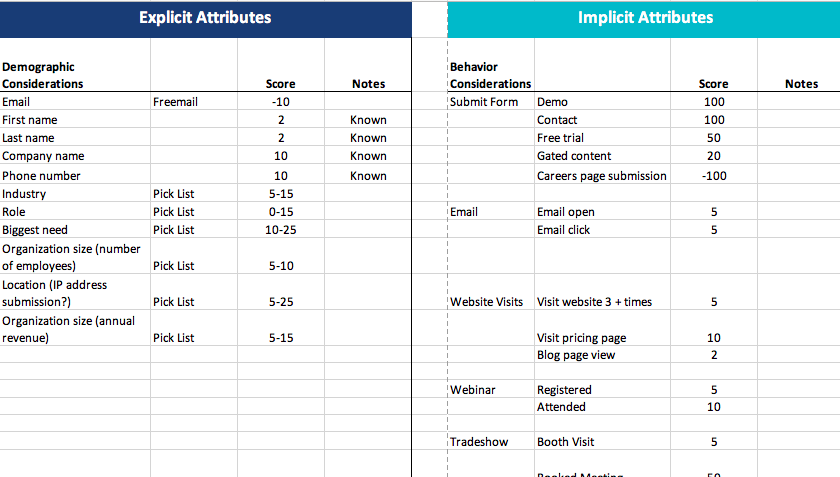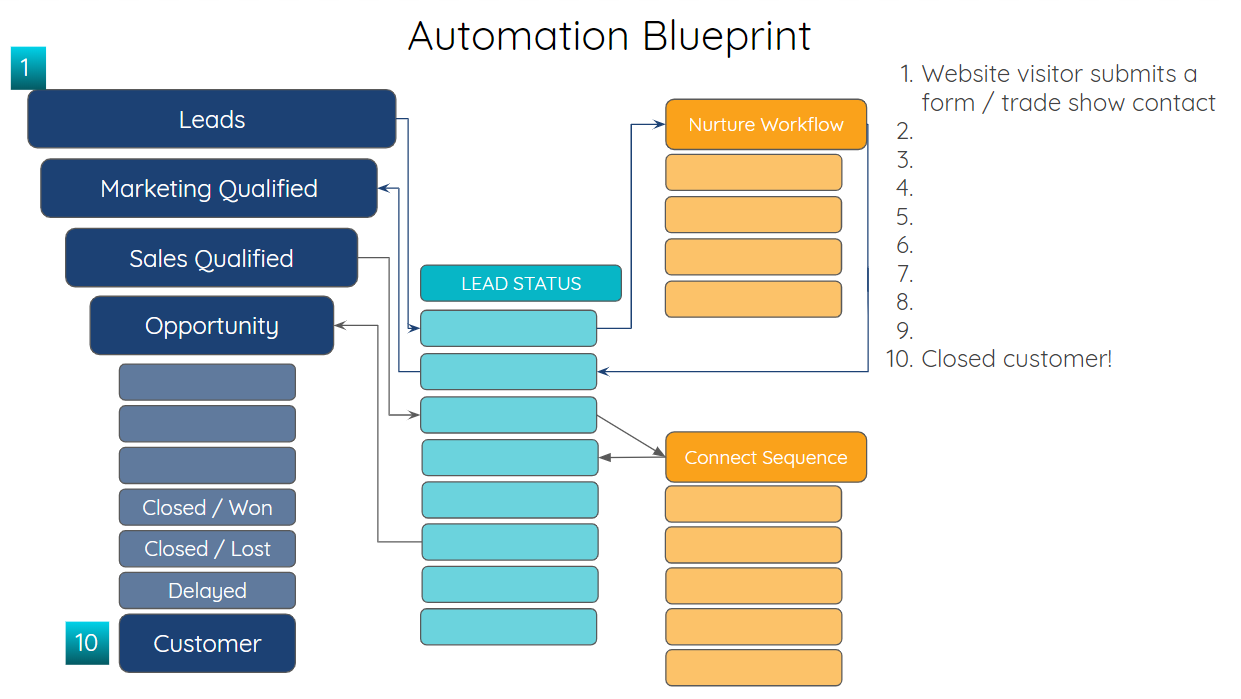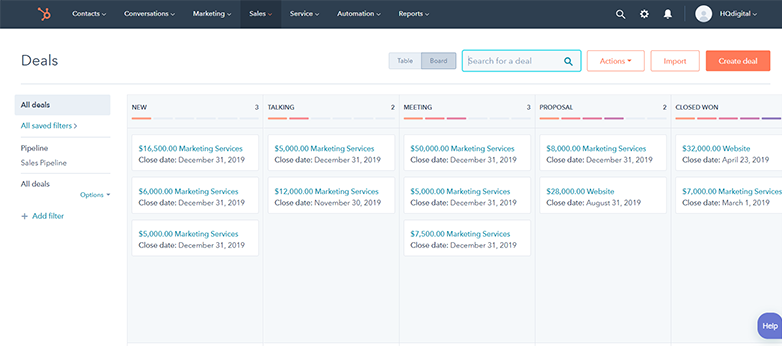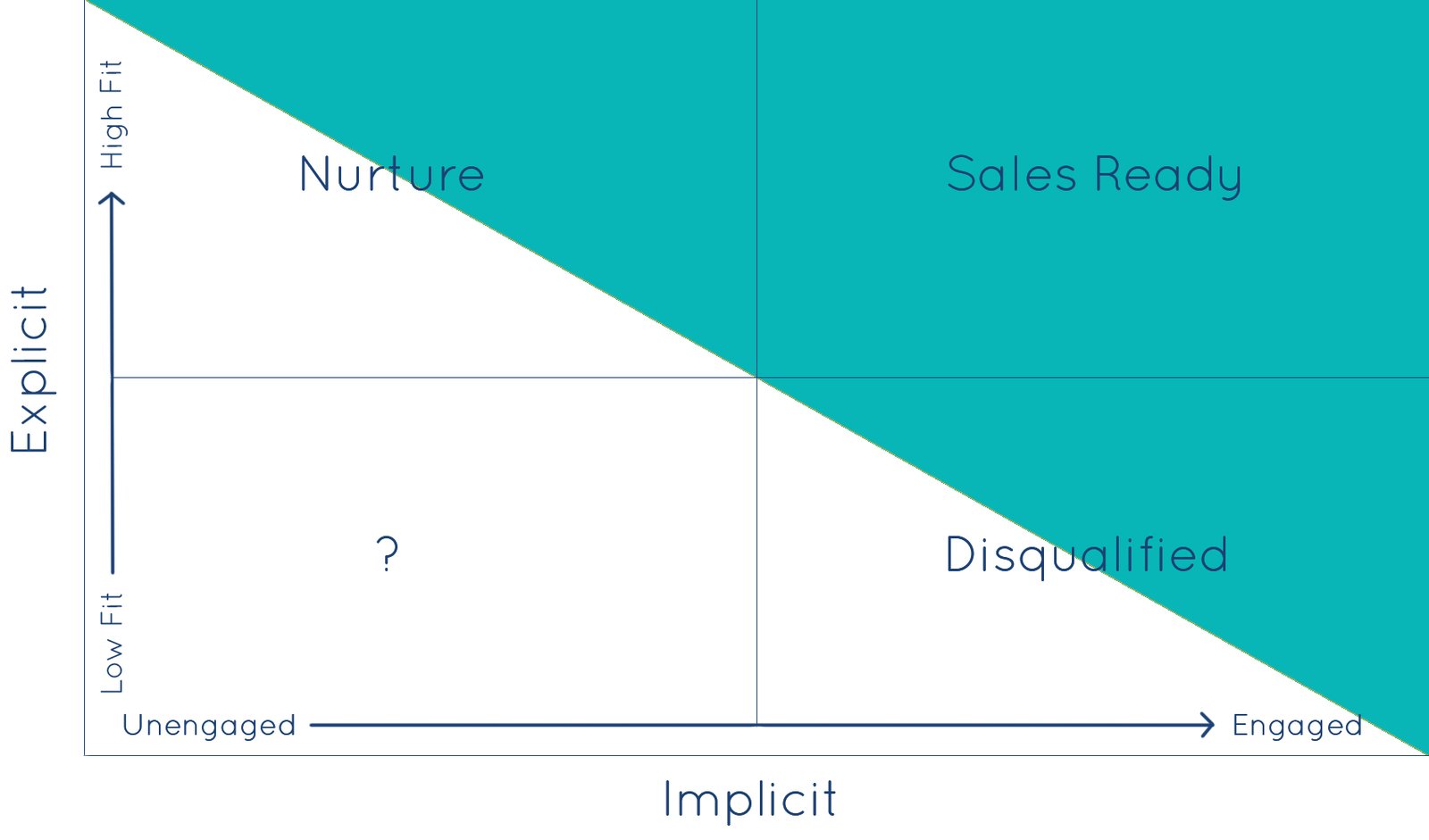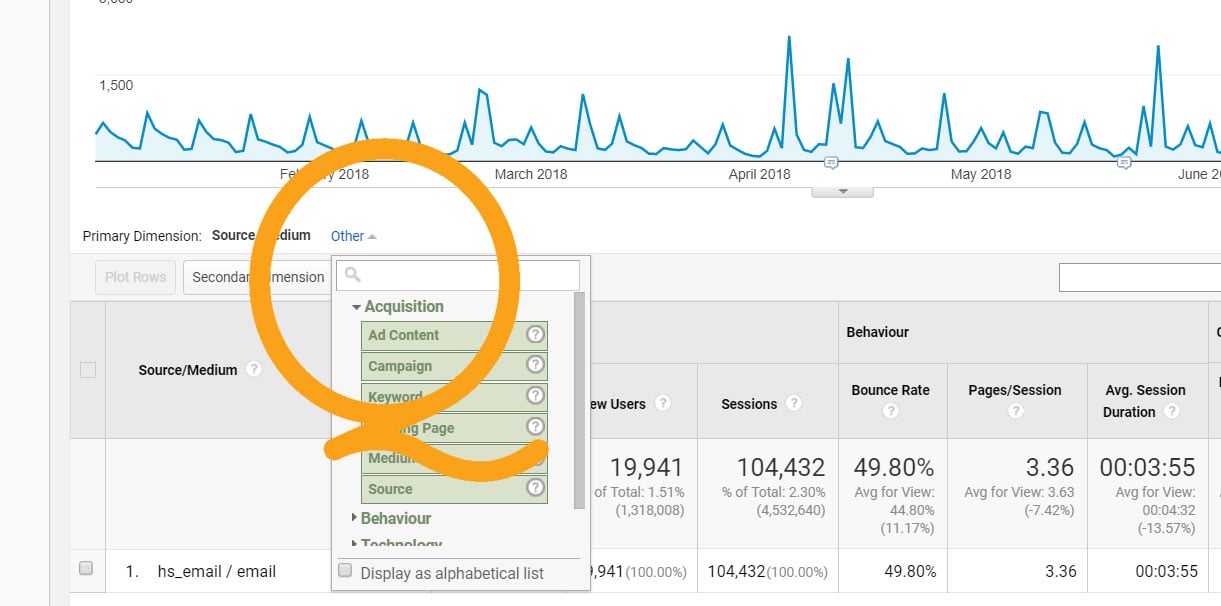
Forecasting is one of the "holy grails" in the sales and marketing world. Perfect forecasting affords perfectly timed budget decisions, investments, new hires ... you get the idea.
Sales leaders and executives examine specific data points to drive their business decisions. This type of analysis covers everything from hiring new team members to prioritizing product innovation. Accurately forecasting sales shines light on important data that lets you make effective decisions about hiring, marketing, and growth.
In this post, we'll focus on the four elements you'll need to create an automated forecasting system in HubSpot:
- Custom properties to track and measure forecast data
- Workflows to automate data capture and capture time stamps
- Reports to measure performance and accuracy
- Team documentation/training to ensure consistent process and data integrity
Building a HubSpot Forecasting Model
We will be putting together a very simple sales model and process that utilizes a single forecasting property and captures projections on a quarterly basis. We are including five deal pipeline stages (Developing, Working, Proposal, Closed Won, Closed Lost).
All of this assumes you already have a sales process (as well as a forecast methodology and philosophy) in place or at least identified.
PRO TIP: If you want to be able to segment your forecast by product or business unit, be sure to include properties that are easy to differentiate from one another. This is essential to ensure that your reporting is accurate and valuable.
1. Custom Properties Required for Forecasting in HubSpot
You can't measure what you aren't measuring. HubSpot captures a lot more data than is readily available to use in segmenting and reporting. Luckily, there are ways to get to it if you know what you're looking for.
Team Forecast Values
You'll need to create a set of custom properties for the forecast metrics you want to be tracking. These should reflect the numbers and projections your team is using. Make sure you create these as drop-down selects.
Our example here includes just one forecasting property.
| Custom Property | Property Type | Values |
|---|---|---|
| Forecast / Likelihood to close | Drop-down select | High Medium Low |
This property will be updated manually by your reps / sales team, and it should indicate how likely a deal is to close. This will be based on a mix of available engagement and demographic information, as well as the "gut feel" of the rep.
It is best practice to include the forecast value as soon as a deal is on the board. For this reason, include the forecast values among the required properties when creating a new deal. We will talk about the process in more detail below in section four.
(Alternate Approach: You can also use a number as your custom forecast property, but know that reporting and filtering / segmenting will present additional challenges.)
Custom Properties for Forecast Time Periods
The vast majority of companies use a combination of monthly, quarterly, and annual forecasting. In order to accurately measure your forecasting, you need to capture the forecast values at each of these intervals. This example is only covering quarterly forecasts. Click here to request a monthly forecast system.
| Custom Property | Property Type | Values |
|---|---|---|
| Forecast Q1 2020 | Single-line text | (set via workflow in section 2) |
| Forecast Q2 2020 | Single-line text | (set via workflow in section 2) |
| Forecast Q3 2020 | Single-line text | (set via workflow in section 2) |
| Forecast Q4 2020 | Single-line text | (set via workflow in section 2) |
Date Picker Properties for Your Deal Pipeline Stages
HubSpot automatically records the time when a deal changes stages, but this data is not recorded onto a property. This limits its accessibility using tools such as workflows, lists, and certain types of reports.
To solve this, you need to create a date picker custom property for each deal stage in your pipeline. These properties will be updated automatically with the workflows that we build in the next section. For our example, we will need:
| Custom Property | Property Type | Values |
|---|---|---|
| Developing Date | Date picker | (set via workflow in section 2) |
| Scoping Date | Date picker | (set via workflow in section 2) |
| Proposal Date | Date picker | (set via workflow in section 2) |
| Closed Won / Closed Lost Date | Date picker | (set via workflow in section 2) |
Forecast Value Properties for Each Deal Stage
In order to know how your deals are progressing and where they are getting held up, you need to capture the forecast at the time when it changes from one deal stage to the next. This will provide yet another layer of data to determine where deals are falling behind or what needs extra attention.
| Custom Property | Property Type | Values |
|---|---|---|
| Forecast Developing | Single-line text | (set via workflow in section 2) |
| Forecast Scoping | Single-line text | (set via workflow in section 2) |
| Forecast Proposal | Single-line text | (set via workflow in section 2) |
| Forecast Closed Won / Closed Lost | Single-line text | (set via workflow in section 2) |
2. Create HubSpot Workflows to Automate Your Forecasting System
Now that you've created the properties that you need for accurate tracking and forecasting, you need to automate your new system using workflows!
Forecasting Workflows for Each Deal Stage
Pick a deal stage and create a new workflow. Ultimately, you'll need one workflow for each deal stage. So, if you have six deal stages, you'll need to repeat this workflow six times.
ENROLLMENT TRIGGER: Deal Enters [Deal_Stage_Name] Stage
Create a new workflow that is triggered by a deal entering a stage of your pipeline. Do not allow re-enrollment for this workflow.
WORKFLOW ACTION: Date Stamp Each Deal Stage
Set the date stamp for the corresponding custom property.
WORKFLOW ACTION: Copy Forecast Value
Copy the current forecast value into the deal stage forecast value.
Forecasting Workflows for Current Time Period
It is not possible to trigger a deal workflow based on a date. Currently, this is only possible for contact and company based workflows. Instead, we'll create a workflow that will need to be updated at the beginning of each time period you want to be tracking (it will need to be updated on the 1st of the month, 1st of the quarter, etc.). For example, you'll need to select the new Time Period property of "Forecast Q2 2020" on April 1, 2020.
ENROLLMENT TRIGGER: Forecast Value is Known
Create a new workflow that triggers when the value of your custom forecast property is known. Enable re-enrollment for this workflow so that each time the forecast value is updated by the rep, we will capture the value every time it changes.
WORKFLOW ACTION: Copy Forecast Value
Copy the current forecast value into the time period forecast value.
3. Build Reports in HubSpot to Track Your Forecast
Why did we need to create all of these custom properties and workflows? To get accurate, detailed reporting of course! Measurement and reporting depend on the data inputs. Without the different values in place, we would not be able to assemble the metrics into a series of reports.
Forecast Reports by Time Period
Compare the total deal amounts for high, medium, and low likelihood to close this month versus the previous month.
Forecast Reports by Rep
Determine which reps are the most accurate in their forecast by comparing the deals marked "highly likely to close" two months ago (or whatever makes sense for your buying cycle) versus what has closed today.
Closed Lost vs. Closed Won Forecast
Report separately on the closed won and closed lost deals and compare them by likelihood to close. Is your team consistently identifying the more likely to close prospects? Knowing this number will help you assess if your sales reps are over or under confident.
There is no limit to the different types of specific reports that you can build. Prioritize creating reports and developing dashboards that align with your goals and strategy and that help provide transparency, accuracy, and measurement of your sales process.
Stop and ask things like "why would a rep change the forecast?" and "how long should a deal take to move stages?". Here are a few more ideas on actions you would want to analyze:
- Completed successful presentation
- Call or email from prospect
- Engagement with marketing or sales content on website or email
- Urgency/critical timing
4. Document and Communicate Your Forecast Process to Your Team
Make sure your team is all on the same page when it comes to the sales process. Agree whether you will change forecast values before or after a deal changes stages.
Taking the time to document a step-by-step process for your team is essential. You'll need a detailed playbook for sales process and forecasting.
You'll also need a flowchart for your forecasting automation system. This will ensure you don't miss a single re-enrollment or trigger.
Follow the steps above, and you'll have a measurable forecasting system in HubSpot for your B2B sales team, resulting in incredible transparency into your pipeline.
Prefer to have some expert help building your custom forecasting system in HubSpot? We'd love to help! Click below to schedule a free consultation with the HubSpot experts at HQdigital.


